Paravertebral anaesthesia with or without sedation versus general anaesthesia for women undergoing breast cancer surgery
- PMID: 33629404
- PMCID: PMC8521097
- DOI: 10.1002/14651858.CD012968.pub2
Paravertebral anaesthesia with or without sedation versus general anaesthesia for women undergoing breast cancer surgery
Abstract
Background: Breast cancer is one of the most common cancers among women. Surgical removal of the cancer is the mainstay of treatment; however, tumour handling during surgery can cause microscopic dissemination of tumour cells and disease recurrence. The body's hormonal response to surgery (stress response) and general anaesthesia may suppress immunity, promoting tumour dissemination. Paravertebral anaesthesia numbs the site of surgery, provides good analgesia, and blunts the stress response, minimising the need for general anaesthesia.
Objectives: To assess the effects of paravertebral anaesthesia with or without sedation compared to general anaesthesia in women undergoing breast cancer surgery, with important outcomes of quality of recovery, postoperative pain at rest, and mortality.
Search methods: On 6 April 2020, we searched the Specialised Register of the Cochrane Breast Cancer Group (CBCG); CENTRAL (latest issue), in the Cochrane Library; MEDLINE (via OvidSP); Embase (via OvidSP); the World Health Organization (WHO) International Clinical Trials Registry Platform (ICTRP) search portal; and ClinicalTrials.gov for all prospectively registered and ongoing trials.
Selection criteria: We included randomised controlled trials (RCTs) conducted in adult women undergoing breast cancer surgery in which paravertebral anaesthesia with or without sedation was compared to general anaesthesia. We did not include studies in which paravertebral anaesthesia was given as an adjunct to general anaesthesia and then this was compared to use of general anaesthesia.
Data collection and analysis: Two review authors independently extracted details of trial methods and outcome data from eligible trials. When data could be pooled, analyses were performed on an intention-to-treat basis, and the random-effects model was used if there was heterogeneity. When data could not be pooled, the synthesis without meta-analysis (SWiM) approach was applied. The GRADE approach was used to assess the certainty of evidence for each outcome.
Main results: Nine studies (614 participants) were included in the review. All were RCTs of parallel design, wherein female patients aged > 18 years underwent breast cancer surgery under paravertebral anaesthesia or general anaesthesia. None of the studies assessed quality of recovery in the first three postoperative days using a validated questionnaire; most assessed factors affecting quality of recovery such as postoperative analgesic use, postoperative nausea and vomiting (PONV), hospital stay, ambulation, and patient satisfaction. Paravertebral anaesthesia may reduce the 24-hour postoperative analgesic requirement (odds ratio (OR) 0.07, 95% confidence interval (CI) 0.01 to 0.34; 5 studies, 305 participants; low-certainty evidence) compared to general anaesthesia. Heterogeneity (I² = 70%) was attributed to the fixed dose of opioids and non-steroidal analgesics administered postoperatively in one study (70 participants), masking a difference in analgesic requirements between groups. Paravertebral anaesthesia probably reduces the incidence of PONV (OR 0.16, 95% CI 0.08 to 0.30; 6 studies, 324 participants; moderate-certainty evidence), probably results in a shorter hospital stay (mean difference (MD) -79.39 minutes, 95% CI -107.38 to -51.40; 3 studies, 174 participants; moderate-certainty evidence), and probably reduces time to ambulation compared to general anaesthesia (SWiM analysis): percentages indicate vote counting based on direction of effect (100%, 95% CI 51.01% to 100%; P = 0.125; 4 studies, 375 participants; moderate-certainty evidence). Paravertebral anaesthesia probably results in higher patient satisfaction (MD 5.52 points, 95% CI 1.30 to 9.75; 3 studies, 129 participants; moderate-certainty evidence) on a 0 to 100 scale 24 hours postoperatively compared to general anaesthesia. Postoperative pain at rest and on movement was assessed at 2, 6, and 24 postoperative hours on a 0 to 10 visual analogue scale (VAS). Four studies (224 participants) found that paravertebral anaesthesia as compared to general anaesthesia probably reduced pain at 2 postoperative hours (MD -2.95, 95% CI -3.37 to -2.54; moderate-certainty evidence). Five studies (324 participants) found that paravertebral anaesthesia may reduce pain at rest at 6 hours postoperatively (MD -1.54, 95% CI -3.20 to 0.11; low-certainty evidence). Five studies (278 participants) found that paravertebral anaesthesia may reduce pain at rest at 24 hours postoperatively (MD -1.19, 95% CI -2.27 to -0.10; low-certainty evidence). Differences in the methods of two studies (119 participants) and addition of clonidine to the local anaesthetic in two studies (109 participants), respectively, contributed to the heterogeneity (I² = 96%) observed for these two outcomes. Two studies (130 participants) found that paravertebral anaesthesia may reduce pain on movement at 6 hours (MD-2.57, 95% CI -3.97 to -1.17) and at 24 hours (MD -2.12, 95% CI -4.80 to 0.55; low-certainty evidence). Heterogeneity (I² = 96%) was observed for both outcomes and could be due to methodological differences between studies. None of the studies reported mortality related to the anaesthetic technique. Eight studies (574 participants) evaluated adverse outcomes with paravertebral anaesthesia: epidural spread (0.7%), minor bleeding (1.4%), pleural puncture not associated with pneumothorax (0.3%), and Horner's syndrome (7.1%). These complications were self-limiting and resolved without treatment. No data are available on disease-free survival, chronic pain, and quality of life. Blinding of personnel or participants was not possible in any study, as a regional anaesthetic technique was compared to general anaesthesia. Risk of bias was judged to be serious, as seven studies had concerns of selection bias and three of detection bias.
Authors' conclusions: Moderate-certainty evidence shows that paravertebral anaesthesia probably reduces PONV, hospital stay, postoperative pain (at 2 hours), and time to ambulation and results in greater patient satisfaction on the first postoperative day compared to general anaesthesia. Paravertebral anaesthesia may also reduce postoperative analgesic use and postoperative pain at 6 and 24 hours at rest and on movement based on low-certainty evidence. However, RCTs using validated questionnaires are needed to confirm these results. Adverse events observed with paravertebral anaesthesia are rare.
Trial registration: ClinicalTrials.gov NCT00645138.
Copyright © 2021 The Cochrane Collaboration. Published by John Wiley & Sons, Ltd.
Conflict of interest statement
AC has registered for PhD thesis titled "Effect of paravertebral anaesthesia on quality of life scores and circulating tumour cells in breast cancer patients". AC has no known conflicts of interest.
ARC has no known conflicts of interest.
HP has no known conflicts of interest.
RS is co‐guide for the above mentioned thesis. RS has no known conflicts of interest.
MKA has no known conflicts of interest.
AS is co‐guide of the above mentioned PhD thesis. AS has no known conflicts of interest.
MK has no known conflicts of interest.
Figures
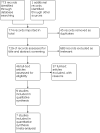
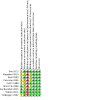
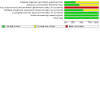
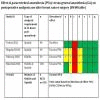
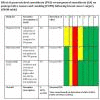
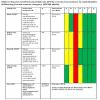
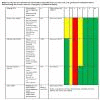
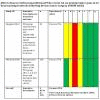
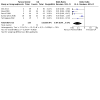
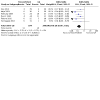
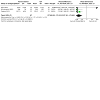
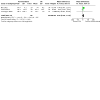
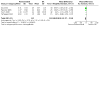

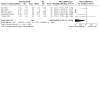
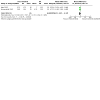

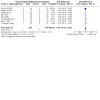
Update of
- doi: 10.1002/14651858.CD012968
Similar articles
-
Pre-emptive and preventive NSAIDs for postoperative pain in adults undergoing all types of surgery.Cochrane Database Syst Rev. 2021 Jun 14;6(6):CD012978. doi: 10.1002/14651858.CD012978.pub2. Cochrane Database Syst Rev. 2021. PMID: 34125958 Free PMC article.
-
Continuous local anaesthetic wound infusion for postoperative pain after midline laparotomy for colorectal resection in adults.Cochrane Database Syst Rev. 2019 Oct 19;10(10):CD012310. doi: 10.1002/14651858.CD012310.pub2. Cochrane Database Syst Rev. 2019. PMID: 31627242 Free PMC article. Review.
-
Complementary and alternative therapies for post-caesarean pain.Cochrane Database Syst Rev. 2020 Sep 1;9(9):CD011216. doi: 10.1002/14651858.CD011216.pub2. Cochrane Database Syst Rev. 2020. PMID: 32871021 Free PMC article.
-
Peripheral nerve blocks for hip fractures in adults.Cochrane Database Syst Rev. 2020 Nov 25;11(11):CD001159. doi: 10.1002/14651858.CD001159.pub3. Cochrane Database Syst Rev. 2020. PMID: 33238043 Free PMC article.
-
Perioperative local anaesthesia for reducing pain following septal surgery.Cochrane Database Syst Rev. 2018 Aug 23;8(8):CD012047. doi: 10.1002/14651858.CD012047.pub2. Cochrane Database Syst Rev. 2018. PMID: 30136717 Free PMC article.
Cited by
-
Research progress of breast cancer surgery during 2010-2024: a bibliometric analysis.Front Oncol. 2024 Dec 9;14:1508568. doi: 10.3389/fonc.2024.1508568. eCollection 2024. Front Oncol. 2024. PMID: 39839765 Free PMC article.
-
Clinical Value of Total Intravenous Anesthesia with Sufentanil and Propofol in Radical Mastectomy.Dis Markers. 2022 Aug 5;2022:7294358. doi: 10.1155/2022/7294358. eCollection 2022. Dis Markers. 2022. PMID: 35968501 Free PMC article. Clinical Trial.
-
Visualization analysis of thoracic paravertebral block in breast surgery based on bibliometrics.Gland Surg. 2023 Jan 1;12(1):110-120. doi: 10.21037/gs-22-754. Epub 2023 Jan 16. Gland Surg. 2023. PMID: 36761487 Free PMC article.
-
Efficacy of Ultrasound-Guided Serratus Anterior Plane Block for Postoperative Analgesia in Patients Undergoing Breast Surgery: A Systematic Review and Meta-Analysis of Randomised Controlled Trials.Pain Res Manag. 2021 Oct 25;2021:7849623. doi: 10.1155/2021/7849623. eCollection 2021. Pain Res Manag. 2021. PMID: 34733377 Free PMC article.
-
Will ESP block be the gold standard for breast surgery? We are not sure.Saudi J Anaesth. 2020 Apr-Jun;14(2):291-292. doi: 10.4103/sja.SJA_776_19. Epub 2020 Mar 5. Saudi J Anaesth. 2020. PMID: 32317911 Free PMC article. No abstract available.
References
References to studies included in this review
Das 2012 {published data only}
-
- Das S, Bhattacharya P, Mandal MC, Mukhopadhyay S, Basu SR, Mandol BK. Multiple-injection thoracic paravertebral block as an alternative to general anaesthesia for elective breast surgeries: a randomised controlled trial. Indian Journal of Anaesthesia 2012;56(1):27-33. [DOI: 10.4103/0019-5049.93340] - DOI - PMC - PubMed
Megahed 2010 {published data only}
-
- Megahed N, Basha H, Abdel Hamid Sh, Ali A, El-Banawy H. Pre-, intra- and post-operative plasma levels of soluble P-selectin in diabetics under thoracic paravertebral block versus general anaesthesia. Egypt Journal of Immunology 2010;17(1):49-58. [MEDLINE: ] - PubMed
Naja 2003 {published data only}
Paleczny 2005 {published data only}
-
- Paleczny J, Loniewska-Paleczny E, PyszM, Hura G. Comparison of the use of thoracic paravertebral block and general anesthesia in breast surgery. Borgis- Anestezjologia Intensywna Terapia 2005;1:12-6.
Pusch 1999 {published data only}
Shkol'nik 2006 {published data only}
-
- Shkol'nik L D, Vasil'ev VIu, Soboleva LV. Multi-injection thoracic paravertebral anesthesia during breast cancer operations. Anesteziologiia i Reanimataologiia 2006;4:80-5. [MEDLINE: ] - PubMed
Sundarathiti 2015 {published data only}
-
- Sundarathiti P, Bormann B, Suvikapakornkul R, Lertsithichai P, Arnuntasupakul V. Paravertebral catheter for three-level injection in radical injection in radical mastectomy: a randomised controlled study. PLoS One 2015;10(6):e0129539. [DOI: 10.1371/journal.pone.0129539. eCollection 2015] - PMC - PubMed
Tedore 2011 {unpublished data only}
-
- Tedore TR, Nowak EJ, Tousimis E, Guheen C, Bhadra P. Comparison of paravertebral block with general anesthesia in patients undergoing breast cancer surgery.
References to studies excluded from this review
Additional references
Abdallah 2014
-
- Abdallah FW, Morgan PJ, Cil T, McNaught A, Escallon JM, Semple JL, et al. Ultrasound-guided multilevel paravertebral blocks and total intravenous anesthesia improve the quality of recovery after ambulatory breast tumor resection. Anesthesiology 2014;120(3):703-13. [DOI: 10.1097/ALN.0000436117.52143.bc] - DOI - PubMed
Ban 2014
Boughey 2009
Brown 2001
-
- Brown LD, Cai TT, DasGupta A. Interval estimation for a binomial proportion. Statistical Science 2001;16:101–17.
Buckenmaier 2010
-
- Buckenmaier CC 3rd, Kwon KH, Howard RS, McKnight GM, Shriver CD, Fritz WT, et al. Double-blinded, placebo-controlled, prospective randomized trial evaluating the efficacy of paravertebral block with and without continuous paravertebral block analgesia in outpatient breast cancer surgery. Pain Medicine 2010;11(5):790-9. [DOI: 10.1111/j.1526-4637.2010.00842.x] - DOI - PubMed
Buckley 2014
Campbell 2020
Cassinello 2015
Cata 2011
-
- Cata JP, Gottumukkala V, Sessler DI. How regional analgesia might reduce postoperative cancer recurrence. European Journal of Pain Supplements 2011;5:345–55.
Cheema 1995
Cheng 2017
Chiu 2014
-
- Chiu M, Bryson GL, Lui A, Watters JM, Taljaard M, Nathan HJ. Reducing persistent postoperative pain and disability 1 year after breast cancer surgery: a randomized, controlled trial comparing thoracic paravertebral block to local anesthetic infiltration. Annals of Surgical Oncology 2014;21(3):795-801. [DOI: 10.1245/s10434-013-3334-6] - DOI - PMC - PubMed
Cochran 1954
-
- Cochran WG. The combination of estimates from different experiments. Biometrics 1954;10(1):101-29.
Coffey 2003
-
- Coffey JC, Wang JH, Smith MJ, Bouchier-Hayes D, Cotter TG, Redmond HP. Excisional surgery for cancer cure: therapy at a cost. Lancet Oncology 2003;4(12):760-8. [PMID: ] - PubMed
Coughlin 2009
Dabbagh 2007
-
- Dabbagh A, Elyasi H. The role of paravertebral block in decreasing postoperative pain in elective breast surgeries. Medical Science Monitor 2007;13(10):CR464-7. [PMID: ] - PubMed
Deegan 2009
Deegan 2010
DerSimonian 1986
-
- DerSimonian R, Laird N. Meta-analysis in clinical trials. Controlled Clinical Trials 1986;7(3):177–88. - PubMed
Ecimovic 2011
Ecimovic 2013
-
- Ecimovic P, McHugh B, Murray D, Doran P, Buggy DJ. Effects of sevoflurane on breast cancer cell function in vitro. Anticancer Research 2013;33(10):4255-60. [PMID: PMID: 24122989] - PubMed
Egger 1997
Exadaktylos 2006
Ferlay 2015
Gottschalk 2010
GRADEpro GDT 2015 [Computer program]
-
- McMaster University (developed by Evidence Prime) GRADEpro GDT. Version accessed 13 February 2018. Hamilton (ON): McMaster University (developed by Evidence Prime), 2015. Available at gradepro.org.
Greengrass 1996
-
- Greengrass R, O'Brien F, Lyerly K, Hardman D, Gleason D, D'Ercole F, et al. Paravertebral block for breast cancer surgery. Canadian Journal of Anaesthesia 1996;43(8):858-61. [PMID: ] - PubMed
Guyatt 2011
Higgins 2003
Higgins 2011
-
- Higgins JP, Green S, editor(s). Cochrane Handbook for Systematic Reviews of Interventions Version 5.1.0 (updated March 2011). The Cochrane Collaboration, 2011. Available from handbook.cochrane.org.
Hozo 2005
Jacobs 2020
-
- Jacobs A, Lemoine A, Joshi GP, Van de Velde M, Bonnet F, PROSPECT Working Group Collaborators. PROSPECT guideline for oncological breast surgery: a systematic review and procedure-specific postoperative pain management recommendations. Anaesthesia 2020;75(5):664-73. [DOI: 10.1111/anae.14964] - DOI - PMC - PubMed
Jaura 2014
Kairaluoma 2004
-
- Kairaluoma PM, Bachmann MS, Rosenberg PH, Pere PJ. Single injection paravertebral block before general anaesthesia enhances analgesia after breast cancer surgery with and without associated lymph node biopsy. Anesthesia and Analgesia 2004;99(6):1837-43. [DOI: 10.1213/01.ANE.0000136775.15566.87] [PMID: ] - DOI - PubMed
Karmakar 2001
-
- Karmakar MK. Thoracic paravertebral block. Anesthesiology 2001;95(3):771–80. [PMID: ] - PubMed
Karmakar 2014
Li 2009
Lonnqvist 1995
Mantel 1959
-
- Mantel N, Haenszel W. Statistical aspects of the analysis of data from retrospective studies of disease. Journal of the National Cancer Institute 1959;22(4):719–48. - PubMed
McKenzie 2019
-
- McKenzie JE, Brennan SE. Chapter 12. Synthesizing and presenting findings using other methods. In: Higgins JPT, Thomas J, Chandler J, Cumpston M, Li T, Page MJ, Welch VA, editors(s). Cochrane Handbook for Systematic Reviews of Interventions Version 6.0. Cochrane, 2019 edition. New York: John Wiley & Sons, Ltd., Updated July 2019.
Moller 2007
Murad 2017
Najarian 2003
-
- Najarian MM, Johnson JM, Landercasper J, Havlik P, Lambert PJ, McCarthy D. Paravertebral block: an alternative to general anesthesia in breast cancer surgery. American Surgeon 2003;69(3):213–8. [PMID: ] - PubMed
Niwa 2013
O'Riain 2005
-
- O'Riain SC, Buggy DJ, Kerin MJ, Watson RW, Moriarty DC. Inhibition of the stress response to breast cancer surgery by regional anesthesia and analgesia does not affect vascular endothelial growth factor and prostaglandin E2. Anesthesia and Analgesia 2005;100(1):244-9. [PMID: ] - PubMed
Parmar 1998
-
- Parmar MKB, Torri V, Stewart L. Extracting summary statistics to perform meta-analyses of the published literature for survival endpoints. Statistics in Medicine 1998;17(24):2815–34. - PubMed
Pöpping 2009
Ramirez 2015
RevMan 2014 [Computer program]
-
- Nordic Cochrane Centre, The Cochrane Collaboration Review Manager 5 (RevMan 5). Version 5.3. Copenhagen: Nordic Cochrane Centre, The Cochrane Collaboration, 2014.
Richardson 1998
Schnabel 2010
Schünemann 2011
-
- Schünemann HJ, Oxman AD, Vist GE, Higgins JPT, Deeks JJ, Glaziou P, et al. Chapter 12. Interpreting results and drawing conclusions. In: Higgins JP, Green S, editor(s). Cochrane Handbook for Systematic Reviews of Interventions Version 5.1.0 (updated March 2011). The Cochrane Collaboration, 2011. Available from handbook.cochrane.org.
Sessler 2008
Sessler 2019
Tahiri 2011
Tedore 2015
Terkawi 2015
-
- Terkawi AS, Tsang S, Sessler DI, Terkawi RS, Nunemaker MS, Durieux ME, et al. Improving analgesic efficacy and safety of thoracic paravertebral block for breast surgery: a mixed-effects meta-analysis. Pain Physician 2015;18(5):E757-80. [PMID: ] - PubMed
Vaghari 2014
Votta‐Velis 2015
Wan 2014
-
- Wan X, Wang W, Liu J, Tong T. Estimating the sample mean and standard deviation from the sample size, median, range and/or interquartile range. BMC Medical Research Methodology 2014;14(135):1-13. [http://www.biomedcentral.com/1471-2288/14/135] - PMC - PubMed
Weigelt 2005
Weltz 1995
Wigmore 2016
Wu 2015
-
- Wu J, Buggy D, Fleischmann E, Parra-Sanchez I, Treschan T, Kurz A, et al. Thoracic paravertebral regional anesthesia improves analgesia after breast cancer surgery: a randomized controlled multicentre clinical trial. Canadian Journal of Anaesthesia 2015;62(3):241-51. [DOI: 10.1007/s12630-014-0285-8] - DOI - PubMed
Publication types
MeSH terms
Associated data
LinkOut - more resources
Full Text Sources
Other Literature Sources
Medical
Miscellaneous

